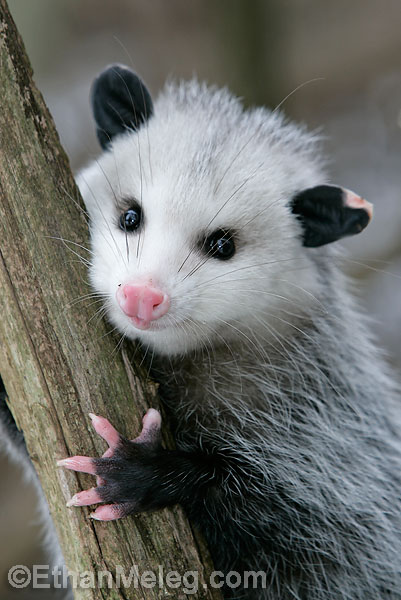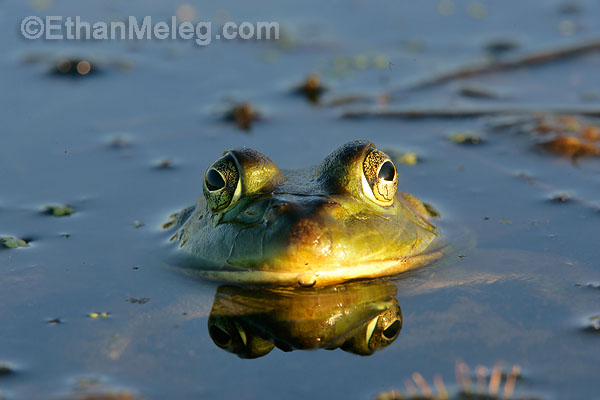

Making Eye-to-Eye Wildlife
Portraits


My favorite wildlife photos tend to be shots where there is direct eye contact with the animal. There's an instant connection when you make eye contact with another living creature. It's one of the key ways we understanding each other and convey emotions - important elements in a powerful photo, the kind that makes you go 'wow'. Master wildlife photographer Frans Lanting calls this intimate style of photography 'eye-to-eye'. Getting eye-to-eye shots requires a mix of patience and knowledge of the species. On a physical level, you need to be roughly at the same height as what you're shooting. For a salamander, you may have to lay on your belly on a wet forest floor. For a soaring hawk, you might be high up on a cliff where thermals provide lift for the birds. Many photographers get caught in the trap of always shooting from the same perspective - standing with their camera at eye level on the tripod. That works for a bird perched up on a branch, or a standing deer, but there are many species where it doesn't fit. To be eye-to-eye, you often have to get dirty and sacrifice your own comfort. Stretching regularly makes this much easier on your body! A slow and fluid approach is key to getting within range of animals, to make eye-to-eye photos. Most species are instinctively programmed to flee when they perceive a threat, and fast or jerky movements suggest a predatory attack. Move smoothly and continually watch how the animal reacts to you. This is one of the hardest things to master - probably because it's so easy to get caught up in the excitement of the moment. I blow many good photo opportunities by getting overzealous! Beyond the physical
challenge of getting close and level with wildlife, is a more subtle
aspect of making eye-to-eye photos - that of capturing behavior, emotion
and mood of the species. When you've gained the trust of an animal, to
be able to observe and photograph it at close range, everyday behaviors
and actions can lead to spectacular photos that connect us emotionally
with the animal. For me, the times I've spent eye-to-eye with wildlife
have been the very best moments of my life, and the resulting photos my
most proud accomplishments. About the photos: Virginia
Opossum at Point Pelee National Park - December 2005 Bullfrog
near Wiarton, Bruce Peninsula, Ontario - Summer 2005
|
This
site © Ethan Meleg, all rights reserved. No form of reproduction,
including copying or saving of digital image files,
or the alteration or manipulation of said image files is
permitted. Any unauthorized use of these images will be
prosecuted
to the full extent of federal copyright laws. Site design and
maintenance by Ethan Meleg.